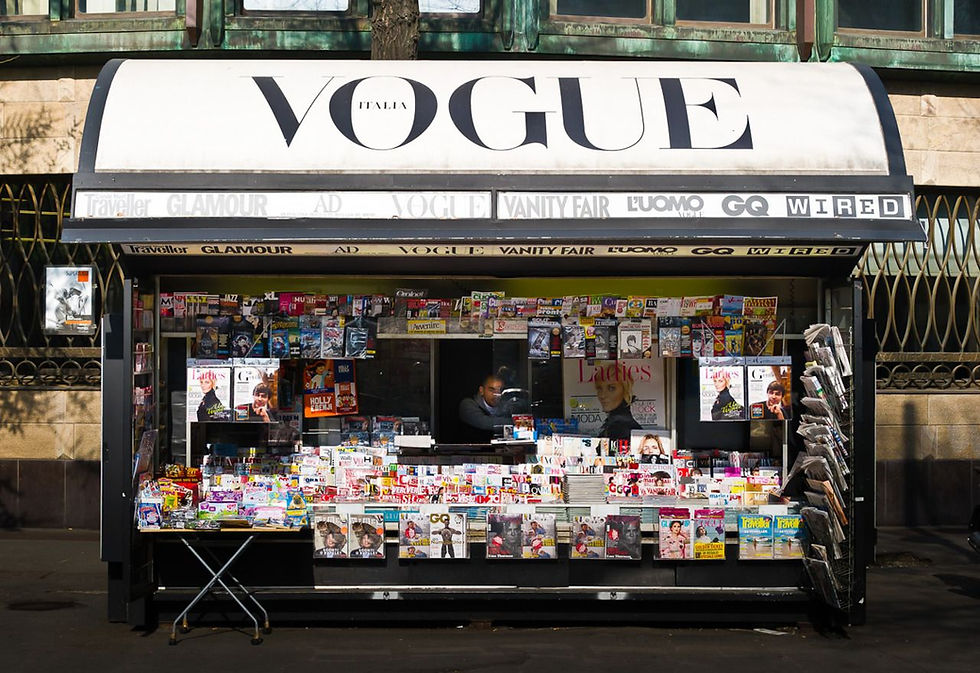Cultural Appropriation – Why It Matters
- Louise Yen Nguyen

- 17. nov. 2020
- 3 min læsning
How come that the West continues to acquire cultural values from other cultures, when there is an existing resistance against it? How can it be considered offensive and is it even possible to live in a globalized world, without cultures colliding?
Fashion is often understood as an act of imitation (Welters & Lillethun, 2019, s. 33) and a way for individuals to express themselves. This makes sense in the context of cultural influence on fashion and self-expression. One could argue that cultural appropriation is an inevitably cause of the way the world has evolved. We live in a globalized world. Why is it not okay to be inspired by other cultures? Fashion is imitating things that inspires you, so why can you not be inspired by other cultures?

The problem occurs when a dominant culture acquires values from other minority cultures. This can perpetuate negative stereotypes and is often stolen out of its context, history and meaning. This, for example, happens when western people dress up in costumes for Halloween, to “have a bit of fun”. Or when Miranda Kerr appears as a Japanese geisha, Kendall Jenner wears an afro wig, or a white model features in blackface makeup, on the front page of Vogue. Does it not seem a bit obscure that Vogue and these models can do the photoshoots in their “costumes” – and then return back to their privileged life as white?

White supremacy is something that we unfortunately often encounter in the fashion industry. Which means that the industry has a tendency to favour white models and that styles are often based on Western beauty standards. White supremacy can be described as a system that grants white people unearned privileges, protection, and power” (Saad, 2020, s. 96).
So, in a way Vogue is trying to approach diversity and differentiate themselves from other fashion-magazines, by illustrating other cultures on their frontpage.
First of all, we can all agree on that painting a blackface (Saad L. F., 2020, s. 226), hence to the history, is very disrespectful and politically incorrect. They also fail this mission to be diverted, because they choose to use to white models to “dress up” as people from other cultures. Why didn’t they just use an actual Asian or Black model? It also becomes offensive, because do Miranda Kerr and Kendall Jenner really understand the cultures that they are stealing from? These cases highlight the White supremacy very well, and cultural appropriation as a way for Western people to make money of dressing up as people from minority cultures.

The key is to understand the difference between cultural appropriation and appreciation. It would appear more appreciative, if they used people from the actual culture that they want to display. If the fashion industry really wishes to be more diverse and inclusive, they could start off with accommodating the underrepresentation of coloured people in the industry – whether it’s in leadership or modelling. Perhaps this is a lesson the fashion industry is yet to learn?
Is it possible to live in a world without acquiring other cultures? In a globalized world, there will undoubtedly be interactions between cultures and countries. We are inspired by each other and travel across national borders. Is cultural appropriation simply an effect of the way the world has evolved? Or is it a phenomenon that exists for the West to capitalize on the values of other cultures? Who should be the judge and determine the limit of what appreciation and appropriation is?
References
Saad, L. F. (2020). Me and White Supremacy. London: Clays Ltd, Elcograf S.p.A.
Saad, L. F. (2020). Resources - Glossary. I Me and White Supremacy (s. 227-230). London: Clays Ltd, Elcograf S.p.A.
Welters, L., & Lillethun, A. (2019). Fashion Systems. I L. Welters, & A. Lillethun, Fashion History (s. 31-42). London: Bloomsbury Publishing.


Kommentarer